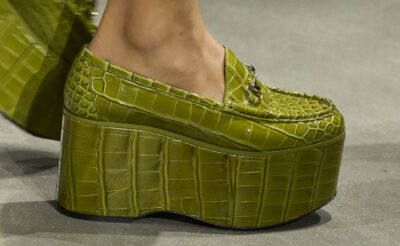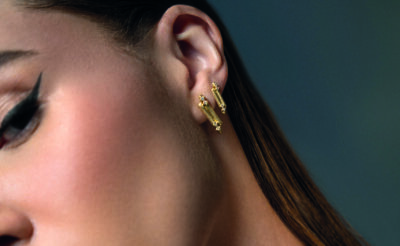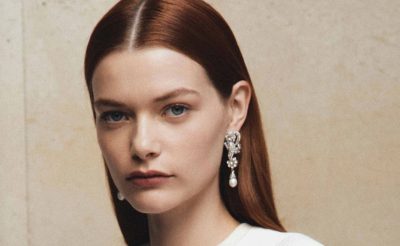Is it really a man’s world? Exclusively for MOJEH Jewellery & Watches, Sophie Stevens, Jewellery Specialist at Sotheby’s Dubai, explores the subtle feminine forces behind 20th century jewellery design
From Cartier’s Panthère creations to the Zip necklace by Van Cleef & Arpels, the signature collections of the major jewellery Houses first conceived in the early 20th century are just as familiar to lovers of high-end adornments today as when they were first launched. Yet what may come as a surprise to many is the role that female designers and collectors played in these bejewelled milestones. Whether their names are still widely recognised, or are spoken by just a knowledgeable few, there remains little doubt that their influence still beats at the heart of many a jewel seen today.
René Boivin was established in 1893 by its eponymous founder, working closely with his wife Jeanne while she managed the firm’s clients and the day-to-day running of the business. In 1917, Jeanne suffered the double blow of suddenly losing both René and their son. Rather than close the firm’s doors she continued to run the business under her late husband’s name, embracing the art deco diamond aesthetic of the time while also experimenting with bolder designs using materials such as wood, rock crystal and semi-precious gems. Madame Boivin only signed her jewels upon request and shied away from press and publicity, preferring to create designs for a smaller group of artistic clients.

Panthère brooch with 116-carat emerald cabochon, commissioned from Jeanne Toussaint at Cartier by the Duke of Windsor for his wife
Madame Boivin’s innovative creations were produced largely thanks to a solely female design team that she hired personally, flourishing under her discerning mentorship. In 1919 the Maison was joined by an ambitious young designer named Suzanne Belperron as a modeliste-dessinatrice (designer-draftswoman), who gradually rose within the firm to become co-directress alongside Jeanne Boivin by 1928. The close collaborations between the two marked a distinct aesthetic chapter in Boivin’s history, notable for the use of more feminine forms and colourful palettes, with many of their later jewels continuing to use and expand upon Belperron’s earlier designs. Behind closed doors, however, a rift was forming. While Belperron became increasingly adamant that she should be named as the firm’s chief designer, Madame Boivin remained steadfast in her opinion that all creations should be attributed to the company name only. In 1932 Belperron left Boivin to work with Bernard Herz, a successful pearl and gemstone dealer who gave her complete creative freedom before transferring his company to her name after the outbreak of World War II. Belperron followed a similar narrative of exclusivity to her previous mentor, only seeing clients in her private salon at 59 rue de Châteaudun (away from the more popular Place Vendôme) and never signing her jewels — instead declaring “my style is my signature”. Collectors certainly confirm that’s the case, with her distinctive touch seen in the use of semi-precious materials such as chalcedony and smoky quartz, groundbreakingly carved into rings and bangles with diamond and gem-set accents. She soon had a devoted following of fashionable clients encompassing celebrities and royalty, including the famed jewellery collector and connoisseur Wallis Simpson, the Duchess of Windsor.

The Duke and Duchess of Windsor in Bermuda in 1940. The Duchess wears the Flamingo brooch created by Cartier Paris the same year
Simpson, an American socialite already once divorced and remarried to her second husband when she met Prince Edward, has become legendary, forever remembered for the eventual King Edward VIII’s historic decision to abdicate the throne for the woman he loved in December 1936. As great gem and jewellery collectors, jewels were inextricably linked to the pair’s relationship, with several items in the Duchess’s collection pointing to significant dates — including a Cartier charm bracelet adorned with nine gem-set crosses, dated between 1934-44 and each linked to events such as their marriage, an assassination attempt on the Duke, and one of the Duchess’s foreign trips. Both were regular patrons of the major jewellery houses, with the Duchess even suggesting her own creative ideas that would become commercial successes for decades to come. In 1938 she proposed her idea for a bejewelled zipper to Renée Puissant, artistic director at Van Cleef & Arpels. Due to the technical complexities of the design it took until 1950 for the Maison’s first Zip necklace to appear on the market, and today it is seen in a variety of precious metals and gemstones as one of their most sought-after and recognisable creations. After the Duchess’s death, Sotheby’s Geneva held the landmark auction of her jewellery collection in 1987. The event helped put Belperron’s name firmly on the jewellery map, and the popularity (and price tags) of her jewels have continued to rise steadily ever since. Other designs in the Duchess’s collection included a host of ‘Great Cat’ designs by Cartier, including an exceptional articulated onyx and diamond panther bracelet from 1952 and a similar clip from 1966.

The zip mechanism endures in this Zip Antique Rayon necklace from Van Cleef & Arpels
The panther’s beginnings can be pinpointed to 1913, when Jeanne Toussaint was hired by Louis Cartier to the firm’s bags, accessories and objects department in Paris. That same year Louis Cartier commissioned George Barbier to create an invitation card featuring an elegant lady with a panther sitting at her feet. ‘Petite Panthère’ was the nickname used by Louis for Toussaint, no doubt helped by her full-length fur coat and the throws that adorned her Parisian apartment. The panther pattern began appearing in the Maison’s designs from that time onwards, starting with an onyx and diamond lady’s wristwatch from 1914. It wasn’t until 1948 that the first three-dimensional Panther was created by the Maison, again thanks to the Duchess of Windsor. The duke commissioned Cartier to create the great cat for his wife in yellow gold, emerald and black lacquer, sitting atop a nearly 100-carat cabochon emerald from his own collection. A similar version in diamond, onyx and sapphire appeared the following year, after the Duchess informed the duke that she did, in fact, prefer blue stones. The Panthère commissions continued, not only by the Duke and Duchess but other prominent clients of the firm, including Prince Sadruddin Aga Khan and Mexican actress María Félix while the alternative tiger designs were more rarely commissioned. Today Panthère de Cartier is one of the Maison’s most iconic collections, extending its reach to handbags, fragrances and accessories.

Cartier’s original ‘Petite Panthère’, Jeanne Toussaint
Whether they played the role of muse, collector or designer, we have much to thank these creative female forces — with only a few among many spotlighted here — for their role in jewellery design. Through a combination of talent, innovation and connoisseurship they created an artistic landscape that is still enjoyed by jewellery enthusiasts across the world.
Read Next: This Jewellery House Is Keeping An Ancient Artform Alive
- Words by Sophie Stevens





